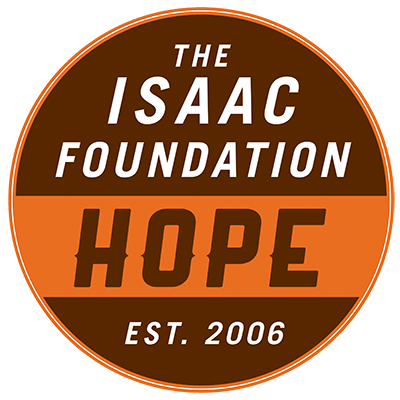
Trey, on Father's Day in June 2004, asleep in the swing chair.
Ryan’s cousin (she has 3 kids of her own) sent this to me this morning. She saw it on a forum she participates in and I want to share it with you…
“My friend is expecting her first child. People keep asking what she wants. She smiles demurely, shakes her head and gives the answer mothers have given throughout the pages of time. She says it doesn’t matter whether it’s a boy or a girl. She just wants it to have ten fingers and ten toes.
Of course, that’s what she says. That’s what mothers have always said. Mothers lie. Truth be told, every mother wants a whole lot more. Every mother wants a perfectly healthy baby with a round head, rosebud lips, button nose, beautiful eyes, satin skin and straight feet. Every mother wants a baby so gorgeous that people will pity the Gerber baby for being flat-out ugly. Every mother wants a baby that will roll over, sit up and take those first steps right on schedule (according to the baby development chart on page 57, column two). Every mother wants a baby that can see, hear, run, jump and fire neurons by the billions. She wants a kid that can smack the ball out of the park and do toe points that are the envy of the entire ballet class.
Call it greed if you want, but we mothers want what we want. Some mothers get babies with something more. Some mothers get babies with conditions they can’t pronounce, a spine that didn’t fuse, a missing chromosome, a palette that didn’t close or a tiny crooked foot or two. Most of those mothers can remember the time, the place, the shoes they were wearing and the color of the walls in the small, suffocating room where the doctor uttered the words that took their breath away. It felt like recess in the fourth grade when you didn’t see the kick ball coming and it knocked the wind clean out of you.
Some mothers leave the hospital with a healthy bundle, then, months, even years later, take him in for a routine visit, or schedule her for a well check, and crash head first into a brick wall as they bear the brunt of devastating news. It can’t be possible! That doesn’t run in our family. Can this really be happening in our lifetime?
I am a woman who watches the Olympics for the sheer thrill of seeing finely sculpted bodies. It’s not a lust thing; it’s a wondrous thing. The athletes appear as specimens without flaw – rippling muscles with nary an ounce of flab or fat, virtual powerhouses of strength with lungs and limbs working in perfect harmony. Then the athlete walks over to a tote bag, rustles through the contents and pulls out an inhaler. As I’ve told my own kids, be it on the way to physical therapy after a third knee surgery, or on a trip home from an echo cardiogram, there’s no such thing as a perfect body. Every body will bear something at some time or another. Maybe the affliction will be apparent to curious eyes, or maybe it will be unseen, quietly treated with trips to the doctor, medication or surgery.
The health problems our children have experienced have been minimal and manageable, so I watch with keen interest and great admiration the mothers of children with serious disabilities, and wonder how they do it. Frankly, sometimes you mothers scare me. How you lift that child in and out of a wheelchair 20 times a day. How you monitor tests, track medications, regulate diet and serve as the gatekeeper to a hundred specialists yammering in your ear.
I wonder how you endure the clichés and the platitudes, well- intentioned souls explaining how God is at work when you’ve occasionally questioned if God is on strike. I even wonder how you endure schmaltzy pieces like this one — saluting you, painting you as hero and saint, when you know you’re ordinary. You snap, you bark, you bite. You didn’t volunteer for this, you didn’t jump up and down in the motherhood line yelling, “Choose me, God. Choose me! I’ve got what it takes.” You’re a woman who doesn’t have time to step back and put things in perspective, so, please, let me do it for you.
From where I sit, you’re way ahead of the pack. You’ve developed the strength of a draft horse while holding onto the delicacy of a daffodil. You have a heart that melts like chocolate in a glove box in July, carefully counter-balanced against the stubbornness of an Ozark mule. You can be warm and tender one minute, and when circumstances require, intense and aggressive the next. You are the mother, advocate and protector of a child with a disability. You’re a neighbor, a friend, a stranger I pass at the mall. You’re the woman I sit next to at church, my cousin and my sister-in-law. You’re a woman who wanted ten fingers and ten toes, and got something more. You’re a wonder.”










